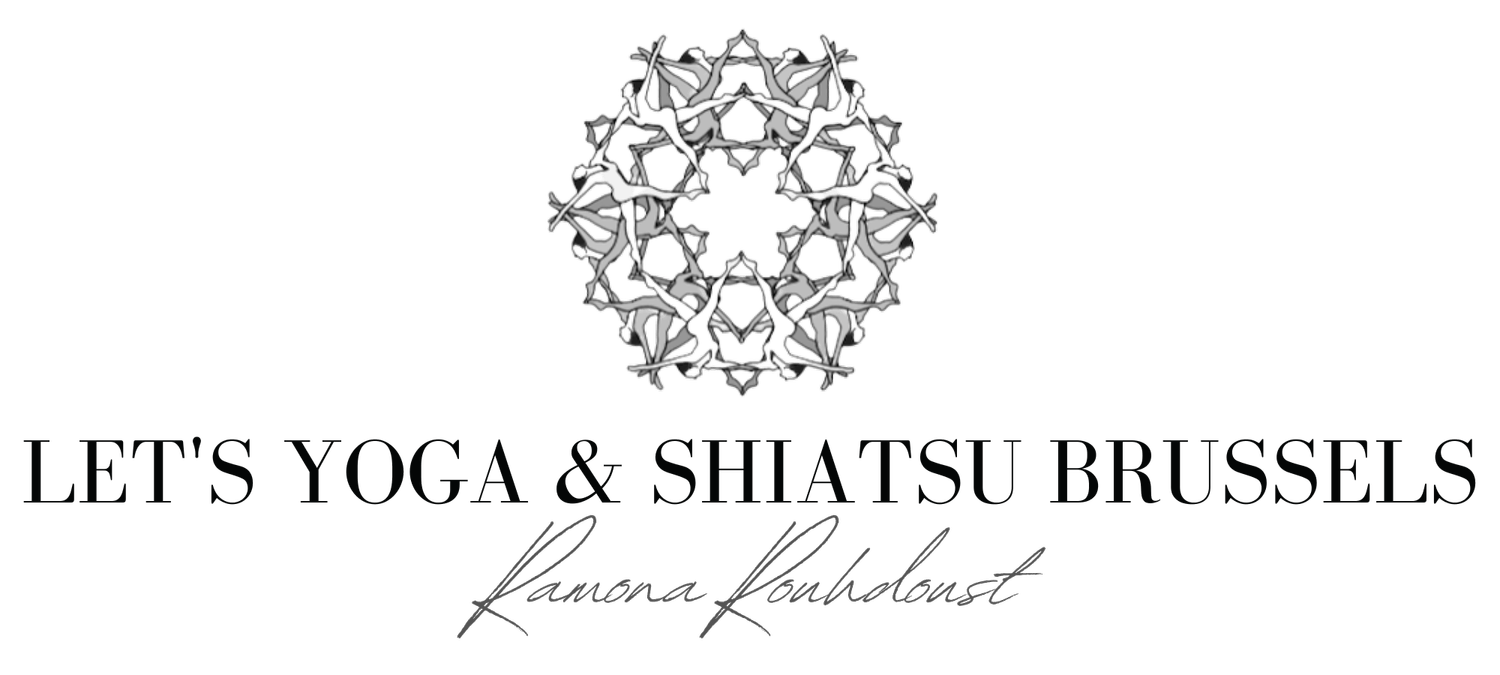
YOGA SUTRA AND MANTRA
ATHA YOGA ANUSHASANAM ||1||
– अथ योगानुशासनम् ॥१॥
YOGA IN THE HERE AND NOW
OPENING AND CLOSING MANTRAS
Yoga Chants
Ashtanga Yoga traditionally has both an opening chant and a closing chant. Because of Yoga's ancient roots, chants (or mantras) are offered in Sanskrit (the ancient language of India), however their meaning is said to be universal as Sanskrit is the language of the heart.
Chanting acts to shift the consciousness of the individual practicing the chant to a higher level of vibration. This in turn brings us closer to our Source or Higher Self – the aspect of ourselves that remains eternal – and leaves the practitioner filled with peace and feeling calm and centred.
Studies have shown that when a person chants it can stabilise their heart rate, lower blood pressure, produce beneficial endorphins in the body and boost metabolic processes, so it perfectly compliments the physical practice of asana.
Ashtanga Yoga Opening ChantThe Opening Prayer is a blessing of gratitude offered to the lineage of teachers and their students who have enabled this ancient practice to survive through thousands of years so that we can experience its benefits today. The recitation of this mantra cleanses the energy of the space we have chosen to practice yoga, as well as preparing the mind, body and emotions for the forthcoming Ashtanga sequence.
Om
Vande Gurunam Charanaravinde
Sandarshita Svatma Sukava Bodhe
Nih Sreyase Jangalikayamane
Samsara Halahala MohashantyaiAbahu Purushakaram
Shankhacakrsi Dharinam
Sahasra Sirasam Svetam
Pranamami Patanjalim
Om
Translation
omI bow to the lotus feet of the Supreme Guru
which awaken insight into the happiness of pure Being,
which are the refuge, the jungle physician,
which eliminate the delusion caused by the poisonous herb of Samsara (conditioned existence).I prostrate before the sage Patanjali
who has thousands of radiant, white heads (as the divine serpent, Ananta)
and who has, as far as his arms, assumed the form of a man
holding a conch shell (divine sound), a wheel (discus of light or infinite time) and a sword (discrimination).om Ashtanga
Closing Mantra
Yoga Closing ChantThe Closing Prayer brings the practice to a peaceful end; sealing in the work done and offering the efforts of our practice to improve the state of the world.
Om
Svasthi Praja Bhyaha Pari Pala Yantam
Nya Yena Margena Mahim Mahishaha
Go Brahmanebhyaha Shubamastu Nityam
Lokah Samastah Sukhino Bhavantu
Om Shanti Shanti ShantihiTranslationMay the rulers of the earth keep to the path of virtue
For protecting the welfare of all generations.
May the religious, and all peoples be forever blessed,
May all beings everywhere be happy and free
Om peace, peace, perfect peace
YOGA SUTRA'S
Before beginning any spiritual text it is customary to clear the mind of all distracting thoughts, to calm the breath and to purify the heart.
समाधिपाद
Samādhi-Pāda
on enlightenment ((1.1-1.116)
combined|Devanagari|phonetic|simplified|translation|explanation
अथ योगानुशासनम् ॥१॥
atha yoga-anuśāsanam ||1||
Yoga in the here and now: an introduction to the study and practice of yoga ||1||
योगश्चित्तवृत्तिनिरोधः ॥२॥
yogaś-citta-vṛtti-nirodhaḥ ||2||
When you are in a state of yoga, all misconceptions (vrittis) that can exist in the mutable aspect of human beings (chitta) disappear. ||2||
तदा द्रष्टुः स्वरूपेऽवस्थानम् ॥३॥
tadā draṣṭuḥ svarūpe-'vasthānam ||3||
For finding our true self (drashtu) entails insight into our own nature. ||3||
वृत्ति सारूप्यमितरत्र ॥४॥
vṛtti sārūpyam-itaratra ||4||
Lacking that, misconceptions (vritti) skew our perceptions. ||4||
वृत्तयः पञ्चतय्यः क्लिष्टाक्लिष्टाः ॥५॥
vṛttayaḥ pañcatayyaḥ kliṣṭākliṣṭāḥ ||5||
There are five types of misconceptions (vrittis), some of which are more agreeable than others: ||5||
प्रमाण विपर्यय विकल्प निद्रा स्मृतयः ॥६॥
pramāṇa viparyaya vikalpa nidrā smṛtayaḥ ||6||
insight, error, imaginings, deep sleep, and recollections.
प्रत्यक्षानुमानागमाः प्रमाणानि ॥७॥
pratyakṣa-anumāna-āgamāḥ pramāṇāni ||7||
Insight arises from direct perception, conclusions, or learning that are based on reliable sources. ||7||
विपर्ययो मिथ्याज्ञानमतद्रूप प्रतिष्ठम् ॥८॥
viparyayo mithyā-jñānam-atadrūpa pratiṣṭham ||8||
Error arises from knowledge that is based on a false mental construct. ||8||
शब्दज्ञानानुपाती वस्तुशून्यो विकल्पः ॥९॥
śabda-jñāna-anupātī vastu-śūnyo vikalpaḥ ||9||
Imaginings are engendered by word knowledge without regard for what actually exists in the real world. ||9||
अभावप्रत्ययालम्बना तमोवृत्तिर्निद्र ॥१०॥
abhāva-pratyaya-ālambanā tamo-vṛttir-nidra ||10||
Deep sleep is the absence of all impressions resulting from opacity in that which is mutable in human beings (chitta). ||10||
अनुभूतविषयासंप्रमोषः स्मृतिः ॥११॥
anu-bhūta-viṣaya-asaṁpramoṣaḥ smṛtiḥ ||11||
Recollections are engendered by the past, insofar as the relevant experience has not been eclipsed. ||11||
अभ्यासवैराग्याभ्यां तन्निरोधः ॥१२॥
abhyāsa-vairāgya-ābhyāṁ tan-nirodhaḥ ||12||
The state of yoga is attained via a balance between assiduousness (abhyasa) and imperturbability (vairagya). ||12||
तत्र स्थितौ यत्नोऽभ्यासः ॥१३॥
tatra sthitau yatno-'bhyāsaḥ ||13||
Assiduousness means resolutely adhering to one’s practice of yoga. ||13||
स तु दीर्घकाल नैरन्तर्य सत्कारादरासेवितो दृढभूमिः ॥१४॥
sa tu dīrghakāla nairantarya satkāra-ādara-āsevito dṛḍhabhūmiḥ ||14||
Success can definitely be achieved via sound and continuous practice over an extended period of time, carried out in a serious and thoughtful manner. ||14||
दृष्टानुश्रविकविषयवितृष्णस्य वशीकारसंज्णा वैराग्यम् ॥१५॥
dṛṣṭa-anuśravika-viṣaya-vitṛṣṇasya vaśīkāra-saṁjṇā vairāgyam ||15||
Imperturbability results from a balance in the consciousness, and when the desire for all things that we see or have heard of is extinguished. ||15||
तत्परं पुरुषख्यातेः गुणवैतृष्ण्यम् ॥१६॥
tatparaṁ puruṣa-khyāteḥ guṇa-vaitṛṣṇyam ||16||
The highest state of imperturbability arises from the experience of the true self; in this state even the basic elements of nature lose their power over us. || 16||
.....
Excerpt from an interview with Dr.Jayashree, a renowned Sanskrit scholar from Mysore, India, about the benefits of chanting the Yoga Sutras:
"Chanting and memorising is vital for our knowledge to become wisdom. Whatever texts you study, chanting reveals itself to you in time. It is a kind of tapas, where we bring the physical mind, the rational mind and the emotional mind to a single point. There, not just understanding, but revelation, happens!"
You can listen to Dr.Jayashree teaching the Samādhi Pāda on this link. She has been a great inspiration.


